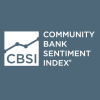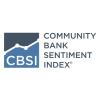Opening Remarks by CSBS Chair Charlie Clark at the 2024 Community Banking Research Conference
CSBS Board Chair Charlie Clark
Community Banking Research Conference
Opening Remarks
St. Louis, Oct. 2
Welcome to the twelfth annual Community Banking Research Conference. As chair of the CSBS Board of Directors, I want to thank our co-sponsors, the Federal Reserve System, and the FDIC, and I want to especially thank our host, the St. Louis Federal Reserve Bank. This conference is a wonderful partnership.
I also want to thank everyone who is here or listening today. I know each of you has an interest in our nation’s community banks, and this conference gives us the unique opportunity to bring together multiple perspectives from academics, regulators, policy makers, and bankers to figure out what is working and what is not.
As a state regulator, I have a vested interest in community banks being successful. We want our local economies to be prosperous. In some states, economic growth is a mandate for our state supervisors. But, in all states, it is important, and our community banks are a core component of our economic well-being. They fund 55% of all small loans to businesses and 67% of commercial bank agriculture lending across the nation.
However, despite their critical role in our dual banking system, community banks too often say they are being overwhelmed by regulations and supervisory expectations that are not tailored to their size, business model, or risk.
This conference was borne when the Too Big to Fail response that followed the global financial crisis of 2008 presented the same concern. We realized we needed research on community banks to inform policymakers and reform our policy approach to this important sector of our economy.
And the research from this conference has successfully joined data with anecdotes. For example, community banks were critical when they provided much needed loans to their customers through the Paycheck Protection Program during the pandemic. We gained more insight into just how essential community banks were to that program from research presented right here in St. Louis.
I think this is worth sharing, even if you have heard it before, because I believe community banks are facing a pivotal moment that needs our attention. Data shows that our community banks are slowly disappearing in the current environment of costly technology and changing supervisory expectations. In fact, there are one-third fewer state-chartered community banks today than when we began this conference in 2013.
Let me boil that down to basic numbers. In 2013, the United States counted 4,940 state-chartered community banks across the country. Today, there are only 3,321. That means there are 1,619 fewer state-chartered community banks in the United States since we started this conference.
I am being very specific here because clearly, especially in today’s world, every bank counts, and we aren’t getting many new ones. De novo activity is alarmingly low, with 45 new state-chartered banks since 2019 – including only one formed this year.
As a state regulator, the shrinking number of community banks concerns me – not because there is a magical number of banks that we should have, but because of what their presence means in our communities.
The decline in the number of community banks should concern all of us. We refer to these banks as community banks for a reason – they are the lifeblood of their communities. Community bankers know their customers’ spending habits, and they know their credit needs. They live in and support the communities that they serve. They know their customers by name. They are the embodiment of relationship lending.
And it is these localities that suffer when a community bank disappears or when they are acquired by an institution from outside the community that does not understand the local economy. The former customers feel the loss most directly.
Of course, community banks face market pressures. Competition is on the rise – and not just from depository institutions. Nonbank mortgage lending, for example, represents more than half the mortgage market. Implementing new technologies can be prohibitively expensive. And banks’ hands are often tied by their core providers, preventing updates and the adoption of key new and innovative products or services.
And, yes, we are hearing that rapidly changing regulations and supervisory expectations are overwhelming community banks. This factor has been a consistent top concern in our annual survey and quarterly sentiment index for community banks.
I asked CSBS to do some research, and they found some startling numbers. We estimate that there have been 30 proposed or final rules from the federal banking agencies totaling more than 4,000 pages for banks this year alone. Not all are directed at community banks, but there is often a supervisory effect. In Washington State, we call this a downward creep.
I fear that the volume of federal regulations is forcing community banks to spend more and more resources solely on regulatory compliance without an appropriate consideration given to tailoring regulation to risk and the size of the institution.
As a regulator, I will always insist on safety and soundness and consumer protection. But I think we can accomplish these goals without a seemingly endless demand for more reporting and more personnel and more management and more process until these small banks can no longer shoulder the ever- growing regulatory costs.
One consequence of these costs and challenges is consolidation. In the past five years, 600 state-chartered community banks have merged or been acquired by other banks or credit unions.
In my home state of Washington, two community banks have merged with banks based in other states in just the past 18 months, and another is pending. One more has been acquired by a Washington State credit union, and we have four more transactions of credit unions buying banks in various phases of the application process. These transactions - credit unions buying banks - are something we are hearing more about nationwide, and we expect to see a few more in Washington. But we can’t blame the credit unions. In this environment, everyone must scale to survive, and the transactions make sense for many of our credit unions, some of which are also under my regulatory authority.
I think it is fair to ask if we are creating the very environment that is forcing these vital banks to close, or merge. Are we adequately tailoring our regulations and supervision to the risk that these small institutions – most of them under $1 billion – pose to consumers and financial stability?
We need to step back and look at regulations to make sure they are targeted to the risk presented by community banks and their business models.
We should embrace innovation in the system. We need to consider the benefits of new business models and innovative products and services. Our regulatory guidance must be transparent and provide clear operational direction, that is again tailored to the size of the institution and risk presented by the institution. We should not dismiss an application out of hand because a bank wants to try something new.
As regulators, we must devote more attention to the success of third-party partnerships, particularly for community banks. We have seen the risks quite clearly. We have seen banks that branched out beyond their core business model and did not invest in the technology or personnel to effectively manage third-party partnerships. But due to the continued decline in the number of community banks, the importance of scale to address regulatory and technology costs, and the competition from other financial service providers, we must provide clear guidance for community banks who need third-party partnerships to survive and want to do it in a responsible way. In other words, we need to be transparent with our expectations and not keep moving the goal post.
In the next two days, we are going to learn more about the impact of community banks on the local economy, deposit stability, and consumer protections. Our keynote speaker, Elizabeth Magennis, will share her perspective on risks and opportunities for community banks to draw on their relationship lending models to compete. And the winning team of the CSBS Community Bank Case Study will share its research into a community bank’s use of social media and how it is preparing for regulatory and supervisory changes.
I encourage us all to listen closely to these findings – and engage in tough conversations throughout the conference. Let’s find the pain points and work on solutions together. We don’t want to lose another third of our community banks in the next 12 years.
A competitive and diverse marketplace is important for consumers. They should have a number of responsible financial service options from which to choose, and this availability should help to lower the cost of credit. We need to work together to make sure that community banks remain a viable option. State regulators look forward to working across the financial system to help make that happen.
- Press Releases
Community Banks Need Tailored Rules to Thrive
Feb 5, 2025
- Blog post
Why Are Community Bankers More Optimistic?
Jan 21, 2025
- Press Releases
Community Banker Optimism Surges at End of Year
Jan 7, 2025
Get Updates
Subscribe to CSBS
Stay up to date with the CSBS newsletter
News to your ears,
New every month.CSBS Podcasts


